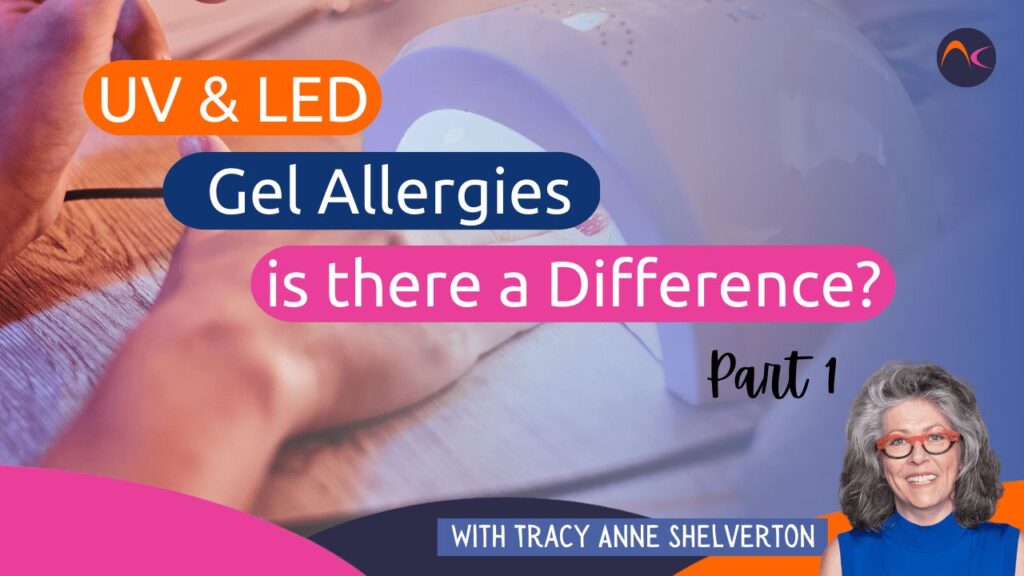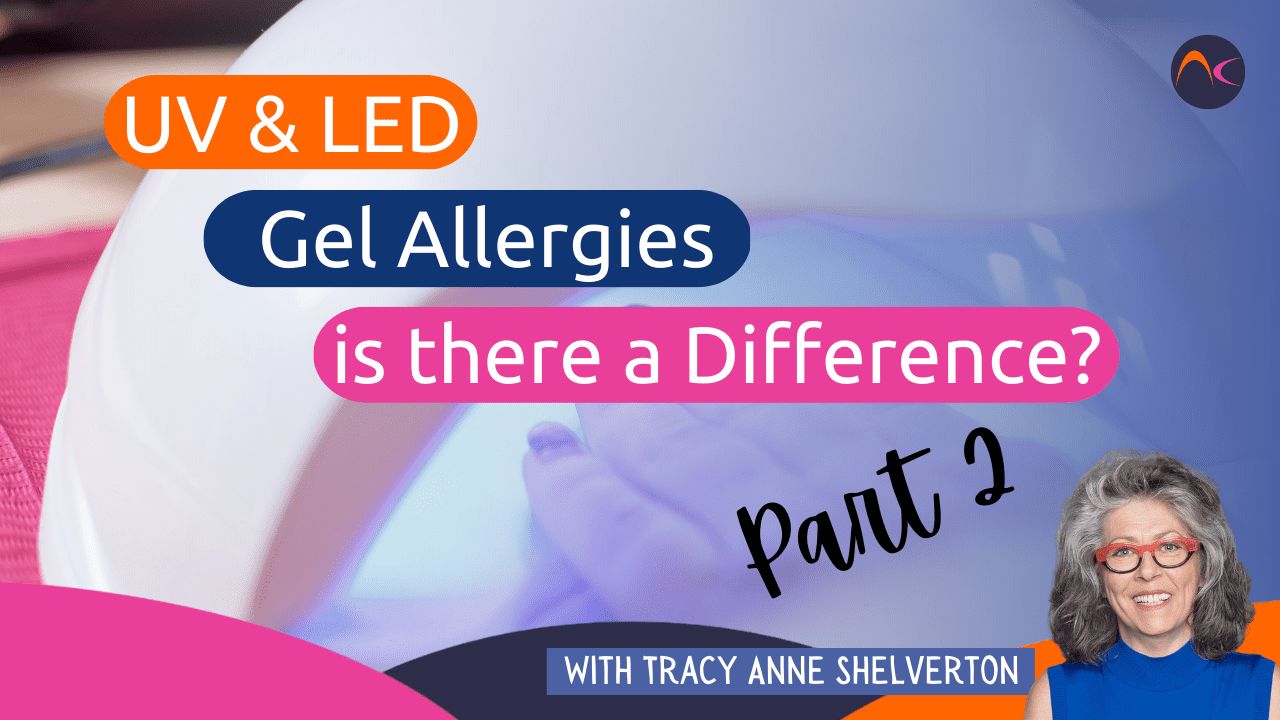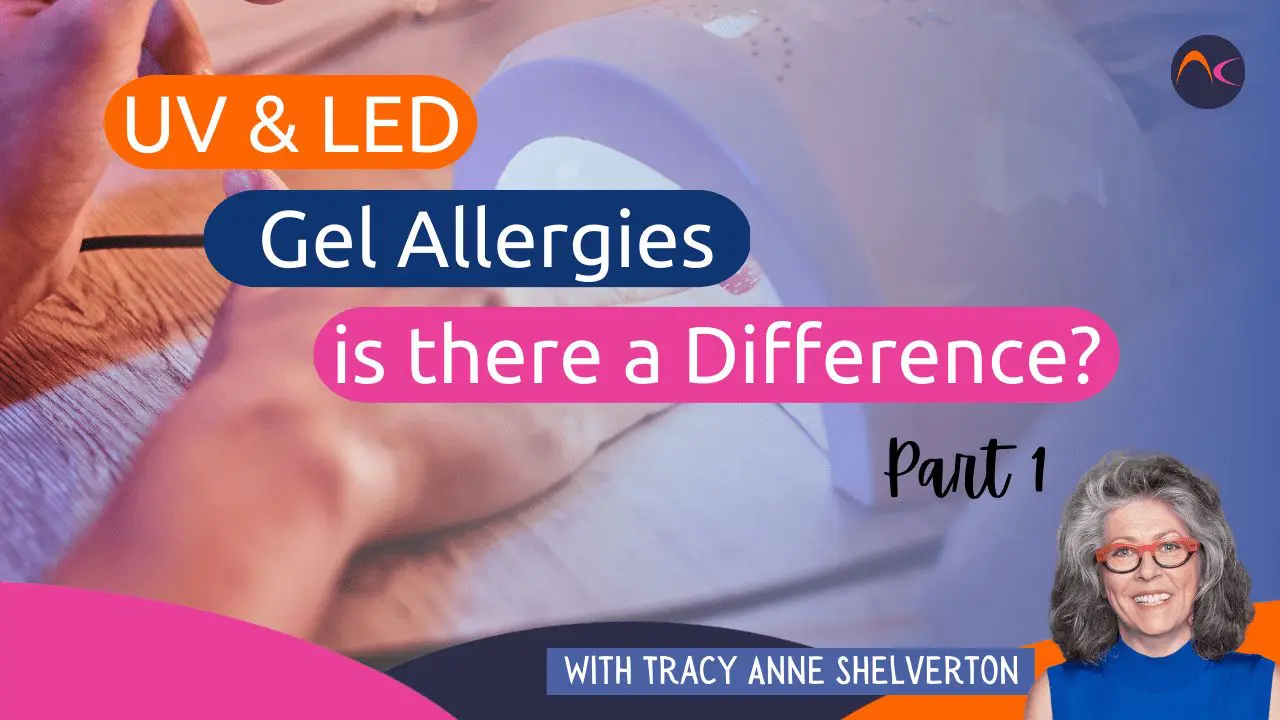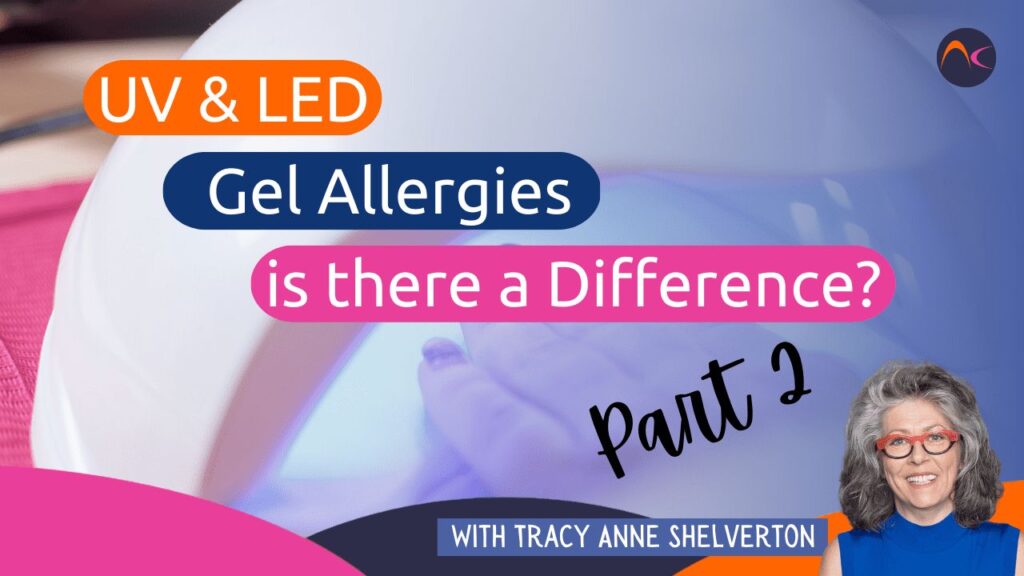LED gel allergies are allergic reactions to the chemicals used in UV-LED-cured gel nail products. UV-LED-cured gels are similar to (the old style) UV-cured gels in that they contain a combination of chemicals, including monomers, oligomers, and photoinitiators, which are activated by the UV energy that’s in the LED light to harden and cure the gel.
Una nota de Doug Schoon: These LED’s emit más UV, pero las manos permanecen bajo las lámparas durante menos tiempo, por lo que las exposiciones son más o menos las mismas que las de las antiguas lámparas fluorescentes UV para uñas.
What’s UV Energy?
UV energy emitted by the UV-LED bulbs is measured in nanometers. Nanometers are used to measure wavelengths of light and distances between atoms in molecules and in our UV-LED products there are photoinitiators that are matched with the nanometers to ‘receive’ the energy & that starts the curing process of our UV-LED gel.
Sin embargo, las bombillas UV-LED emiten un espectro de energía más amplio que las bombillas UV, lo que significa que curan más rápidamente, lo que puede causar un tipo diferente de reacción en algunas personas, especialmente si los fotoiniciadores del gel UV-LED no coinciden con la salida (nanométrica) de la lámpara de curado UV-LED.
It’s important to match the lamp that cures your gel with the gel that you use, this will ensure curado adecuado of your UV-LED gel and help prevent allergies occurring. The company retailing you the product should be able to answer all your questions before & after you buy their product, if they can’t, it might be worth looking for another supplier.
Cómo reconocer una reacción alérgica
Allergic reactions to the allergens in UV-LED-cured gels can range from mild irritation to more severe symptoms, such as redness, itching, swelling, or blisters. In some cases, the reaction may be delayed and appear several hours or days after the initial exposure to the gel (Some reactions can take years before they manifest – an allergy could be built up over a long period of time) If you notice any of these symptoms, remove all product & take care to recover your nail units with a good oil & lotion.
Repeated exposure to these (uncured) chemicals can also increase the risk of developing an allergy over time but it’s also possible to suffer an ‘acute allergy’ especially if you had a reaction to another allergen earlier.
To prevent LED gel allergies in the salon or education centre, it’s recommended to take certain precautions, such as wearing gloves during application and removal, good ventilation, avoiding skin contact with the gel as much as possible, and using only high-quality, reputable products that have been tested & certified for safety and leave all skin layers intact around the nail unit.
Nuestra piel y las alergias
Our guardian seals protect us not only from pathogens but also from chemicals that may or may not be on our skin & our skin is our very own ‘built-in’ UV Radiation filter – removing any of your skin layers during a salon service could increase the chance of developing skin cancer.
Nosotros no recomendar self-patch testing the product on a small area of skin, leave that to the experts & avoid using a similar product if any signs of irritation or allergy occur until you know for sure which ingredient and or allergen caused the reaction in the first place. It’s much easier to find a product you can use when you know what caused the problem in the first place.
¿Qué hacer si se sospecha una reacción alérgica a un gel UV-LED?
If you suspect that you have a gel allergy, it’s important to inform the brand & company you brought it from & seek medical attention for proper diagnosis and treatment before changing to another product, this will prevent any further allergic reactions and keep you and your clients safe in the salon.
Por si se ha perdido la primera parte Alergias a UV y gel article…………..




